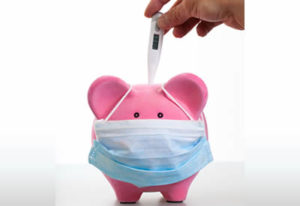Posted on April 16, 2020 by Wendy Frost

In fact, previous research by John Wald and Brian McTier, Ph.D. ’11, finance faculty at the UTSA College of Business and their co-author, found that stock market returns are lower and trading activity decreases when flu incidence is high.
Their paper, “Do Stock Markets Catch the Flu?” was published in 2013 in the Journal of Financial and Quantitative Analysis. They studied the New York Stock Exchange for trading activity and used data from the Centers for Disease Control and Prevention and Google Flu Trends to measure flu activity in and outside the United States over a 13-year time period.
Wald has revisited this research as he has observed the current scenario play out. “The past month has seen tremendous volatility in the stock markets due to the outbreak of COVID-19, both in the U.S. and across the world,” said Professor Wald. “Existing research, including research by myself and my co-authors, shows that disease has a real impact on stock markets.”
A second component that Wald factors into the current economic health of the nation is the impact that social distancing has on the economy. “Cancelled trips, closed restaurants, requirements to work from home and disruptions in the global supply chain are having a significant economic impact, and that impact will be greater the longer these preventative measures need to be in place.”
More importantly, Wald says that the tremendous rise in uncertainty has been attributed to the volatility of the stock market. Research has shown that rises in uncertainty lead to significant decreases in both consumer and business spending.
“People choose to postpone car, house, or other major durable goods purchases if they are uncertain about the future,” noted Wald. “Similarly, businesses can delay major investments if the economic forecast is unclear.”
As we all live within this new reality, Wald says better economic forecasts will become available as we learn more about the duration of the epidemic.
“Solid, reliable information will eventually become available, and that should decrease volatility, hopefully allowing us to live in less uncertain times,” he said.

